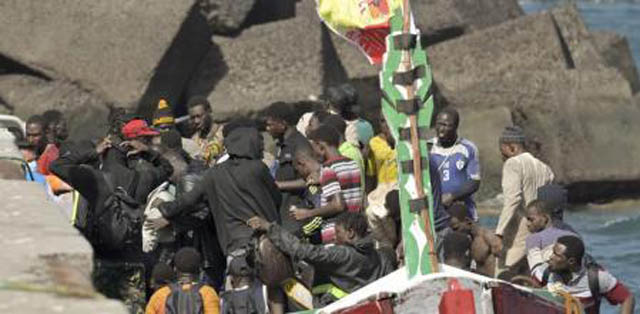
MADRID, Aug 28, 2024 (BSS/AFP) - Spain's Canary Islands on Wednesday mark 30 years since two young men from Western Sahara arrived on their shores -- the first in an ever-growing procession of migrants from Africa.
Since then, over 200,000 migrants have landed on the Atlantic archipelago off the northwest coast of Africa after travelling hundreds of kilometres on packed, rickety boats in search of a better life in Europe.
The anniversary of the opening of the so-called Canaries route coincides with a tour by Spain's Socialist Prime Minister Pedro Sanchez to three African countries where many of the migrants come from -- Mauritania, where he arrived on Tuesday, The Gambia and Senegal.
Sanchez will try to get these nations to step up their efforts to stop migrants from heading to the Canaries, which are struggling to cope with a surge in arrivals.
The archipelago received a record 39,910 migrants in 2023, a figure it is on track to surpass this year.
Over 22,000 migrants have already landed in the Canaries so far this year and the Spanish government estimates there are some 200,000 people in Mauritania, many from war-torn Mali, waiting to make the crossing.
At least 30,000 migrants arrived in the archipelago between 1994 and 2006 when arrivals took off. That year 31,678 migrants landed in the Canaries, a record figure that was only surpassed last year.
Since 2006 a total of 186,811 migrants have landed in the archipelago, bringing to over 200,000 the numbers of arrivals since August 28, 1994, according to interior ministry figures.
On that date, two Sahrawis arrived on the island Fuerteventura on a small wooden boat to request political asylum.
- 'It was hell' -
At their closest point, the islands lie 100 kilometres (62 miles) off the coast of North Africa, the shortest route running between the coastal town of Tarfaya in southern Morocco and the island of Fuerteventura in the Canaries.
"When you board a boat, the first thing you think of is death," Younousse Diop, who arrived on the island of Tenerife from Senegal in 2016 when he was just 13, told AFP recently.
"It was hell. The nights are hard, the days are hard," he said of the 11-day boat trip.
Spain has reached agreements with nations such as Senegal and Mauritania to make it easier to deport migrants who arrive illegally, and provide the countries with funds to step up efforts to stop people from making the crossing.
This helped bring down arrivals until around 2020 when tighter control in the Mediterranean Sea pushed more migrants to the Canaries route.
But the Atlantic route to the Canary Islands is particularly dangerous because of strong currents, with migrants travelling in overloaded, often unseaworthy, boats without enough drinking water.
The currents cause shipwrecks or sometimes push boats past the Canaries to end up across the ocean, in Brazil or the Dominican Republic -- with all their passengers dead, as has happened in recent years.
- Deadly route -
Since 2014 at least 4,857 people have died or disappeared while trying to reach the Canary Islands, according to the United Nations' International Organization for Migration (IOM).
Migrant rights group Caminando Fronteras (Walking Borders), which compiles its own figures from families of migrants and rescue statistics, has a higher figure. It says 18,680 people have died or disappeared since January 2018 on the Canaries route.
The explosion in the number of arrivals, especially of unaccompanied minors who cross alone and cannot legally be sent back, have overwhelmed the authorities in the Canary Islands, where migrant reception centres are full beyond capacity.
Fernando Clavijo, the regional leader of the islands, has urged the European Union to do more "so that the Canary Islands do not have to shoulder all of Europe's migratory pressure on their own".
"In the end, it's a pressure for Europe, because they are arriving in Europe, in Spain, and not just on the Canary Islands," he said Friday after meeting with Sanchez to discuss the issue.